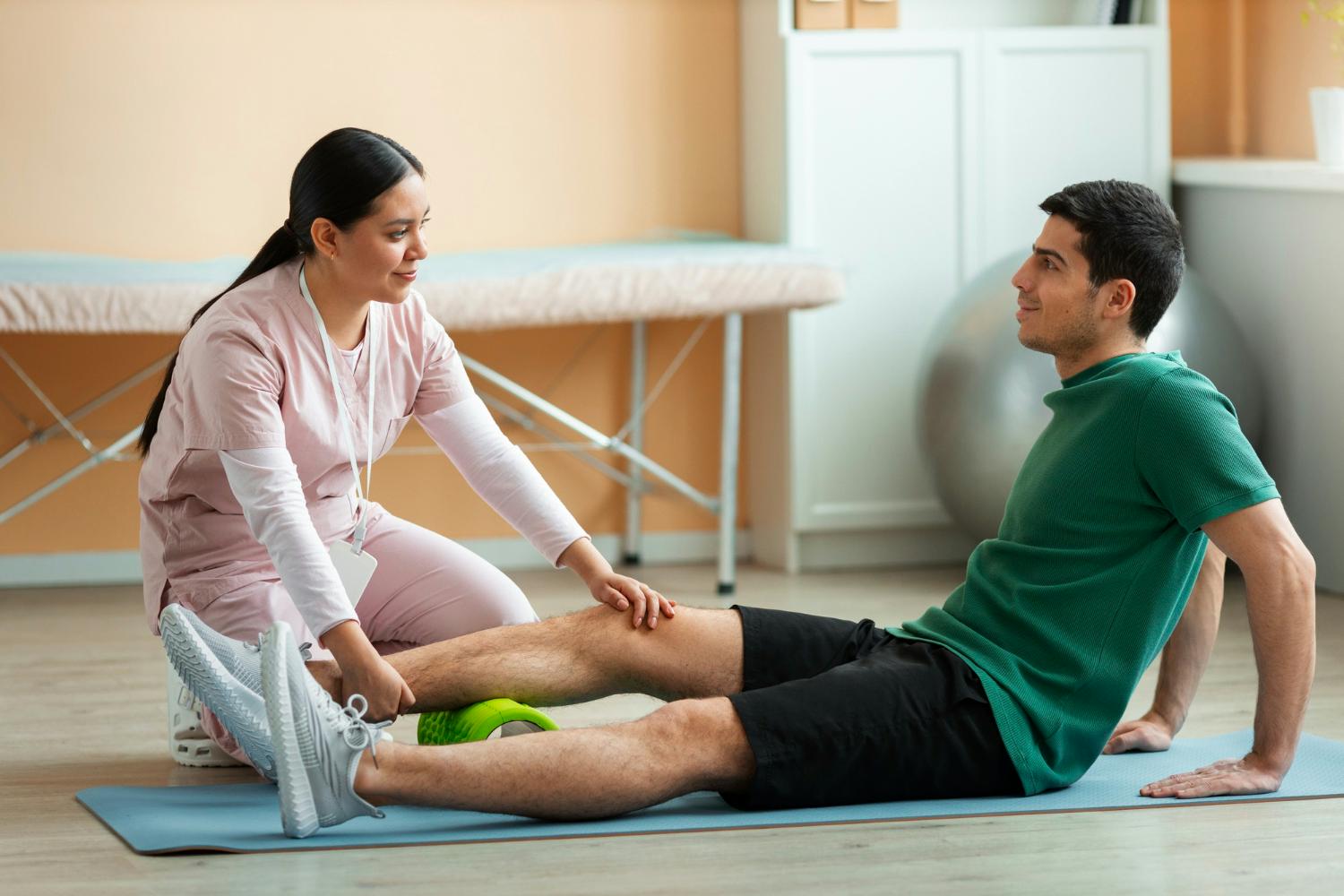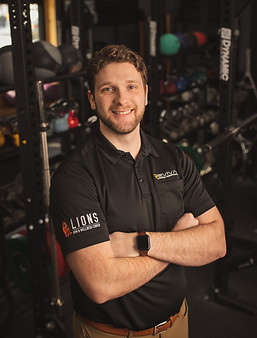Introduction
Physical therapy plays a critical role in the sports world, offering numerous benefits to athletes of all levels. It involves skilled professionals, known as physical therapists, who specialize in physical therapy sports, devising personalized treatment plans to enhance sports performance, prevent injuries, and ensure a quick and effective recovery process. These treatment plans often include exercises to improve range of motion and protocols for injury prevention tailored to the specific needs of athletes.
The Role of Physical Therapy in Sports
The field of physical therapy is integral to sports, addressing sports-related injuries through a range of treatment options. Physical therapists provide custom treatment plans, tailored to individual athlete needs, focusing on pain relief, improving range of motion, and facilitating swift recovery from injuries. Injury prevention, a cornerstone of sports physical therapy, is achieved through targeted exercises and education.
Within sports medicine, therapists possess a sports injury specialty, undergoing extensive training. They often work directly with sports teams and sports medicine physicians, forming a cohesive unit aimed at maximizing sports performance and ensuring athletes’ health. This partnership is particularly critical for professional sports athletes, yet equally valuable for amateurs.
Key Areas Addressed by Physical Therapy in Sports

Physical therapy plays a vital role in the world of athletics, offering a multifaceted approach to the well-being of sports participants. It extends beyond just managing injuries, branching out to key areas that include injury prevention, performance enhancement, pain management, and accelerated recovery.
Injury Prevention
Prioritizing injury prevention is at the forefront of sports physical therapy. The usage of specialized exercises and regimens is tailor-made to fortify the athletes’ bodies against the high strain of their respective sports. By focusing on core strength, balance, and flexibility, physical therapists help athletes not only prepare their bodies for the rigors of competition but also educate them on proper techniques and body mechanics.
Performance Enhancement
Enhancing athletic performance is another pillar of sports physical therapy. Therapists bring to the table a deep understanding of biomechanics and utilize evidence-based techniques to optimize athletes’ abilities. This can involve refining an athlete’s range of motion for better agility and power or deploying specific conditioning programs to build strength and endurance.
Pain Management
Living with pain is not the norm for athletes, and sports physical therapists are committed to offering solutions that address pain at its source. Techniques like dry needling, soft tissue mobilization, and therapeutic exercises are part of a well-rounded treatment plan that not only strives for pain relief but also works to prevent it from recurring.
Faster Recovery
Whether it’s an acute sports injury or post-operative care, physical therapy is designed to facilitate faster recovery times for athletes. Through a mix of passive and active treatments ranging from cryotherapy to progressive strength training, therapists aim to restore function and return athletes to their sport as quickly and safely as possible.
Common Sports Injuries and How Physical Therapy Can Help
Physical therapy is a cornerstone in managing sports injuries, offering personalized treatment plans for a range of conditions. Here’s a brief overview:
Strains and Sprains
- Typical in: Ball sports, athletics
- Physical Therapy Benefits: Restores strength and flexibility through exercises; teaches proper movement to prevent a recurrence.
ACL Tears
- Typical in: Contact sports, soccer, basketball
- Physical Therapy Benefits: Post-operative care to rehabilitate the knee; enhances stability and proprioception.
Shoulder Injuries
- Typical in: Racquet sports, baseball, swimming
- Physical Therapy Benefits: Special tests to identify the specific injury, followed by targeted treatment to decrease pain and improve range of motion.
Tendonitis
- Typical in: Running, cycling, tennis
- Physical Therapy Benefits: Uses techniques like dry needling for pain relief; educates on workload management to prevent chronic pain.
Each program incorporates a mix of modern therapies—manual, strength training, and modalities—tailored to the athlete’s sport and injury. With extensive training, therapists prioritize not just recovery but also injury prevention and sports performance optimization. This holistic approach ensures athletes safely return to peak physical activity.
Including Physical Therapy in Training Routines

Incorporating physical therapy into training routines isn’t just about injury recovery; it’s also a proactive step toward injury prevention and enhanced sports performance.
Benefits of Physical Therapy in Training:
- Injury Prevention: By identifying weak areas, therapists can tailor exercises to strengthen vulnerable points.
- Optimized Performance: Targeted exercises improve sport-specific movements, leading to better athletic output.
- Pain Management: Techniques like dry needling offer relief and help maintain consistent training.
- Recovery Acceleration: Proper post-activity stretches and treatments reduce muscle fatigue and accelerate recovery.
When to Include Physical Therapy:
- Pre-Season: Sets the foundation for a strong, injury-free season.
- In-Season: Maintains optimal performance and manages minor aches.
- Post-Season: Focuses on recovery and preparation for the next cycle.
Engaging with sports medicine clinicians and physical therapists should be an integral part of any serious athlete’s regimen, ensuring longevity in their sport of choice and maximizing their physical capabilities.
How Collaboration Between Athletes and Physical Therapists Benefits Both in Sports
Athletes and physical therapists working together can cultivate an environment ripe for success and well-being, embodying what do sports physical therapists do in their practice, while navigating the nuances of rehab vs physical therapy. This symbiotic relationship offers a tailored approach to both injury management and performance enhancement. A physical therapist brings extensive training to the table, identifying areas prone to sports-related injuries and employing special tests to craft personalized treatment plans.
Finding a Qualified Physical Therapist for Sports
When an athlete requires care, finding a qualified physical therapist specializing in sports is crucial. Here are key factors to consider:
- Specialty Training: Seek out therapists with sports injury specialty and experience in physical therapy sports medicine clinics.
- Certifications: Verify their certifications and if they’ve undergone extensive training pertinent to sports physical therapy.
- Treatment Techniques: Inquire about their proficiency in various treatment options such as dry needling and special tests for injury prevention.
- Collaboration: Ensure they work closely with sports medicine physicians and understand the role of sports therapists within teams.
If you are a sports enthusiast who needs physical therapy, Revival Physical Therapy in Minneapolis-St. Paul offers a comprehensive and specialized approach to sports physical therapy. Our team of highly skilled and experienced therapists is dedicated to not only restoring function but also optimizing and enhancing performance. We understand the unique needs of athletes and work closely with a larger sports medicine team to provide a complete continuum of care.
Conclusion
Physical therapy plays an integral role in the world of sports, transcending beyond mere injury rehabilitation to encompass injury prevention, improved range of motion, and enhanced sports performance. Athletes, from the weekend warrior to the professional sports athlete, can benefit from personalized treatment plans designed to tackle their specific challenges and goals.
By incorporating a diverse array of physical therapy treatments, athletes can experience pain relief, faster recovery, and a return to physical activity that is safe and sustainable.
FAQs
Is physical therapy good for athletes?
Physical therapy is crucial for athletes, offering injury prevention, enhanced recovery, improved performance, and effective pain management. It targets areas of weakness or tightness to prevent injuries, aids in rehabilitation post-injury, boosts strength, endurance, and flexibility for better performance, and employs techniques like dry needling for pain relief.
What is physiotherapy in sports?
If you are wondering what is sports physical therapy, or physiotherapy in sports, it encompasses assessment, treatment, rehabilitation, and performance enhancement for athletes. It involves conducting specialized tests to evaluate an athlete’s condition, utilizing various treatments such as exercises, manual therapies, and modalities like ultrasound or electrical stimulation.
How does physical therapy help sports injuries?
Physical therapy plays a vital role in the recovery from sports-related injuries by focusing on restoring movement through stretching and strengthening exercises, decreasing pain with techniques like ice, heat, and manual therapy, and facilitating healing to promote tissue regeneration. It offers personalized care tailored to the specific type of sports injury, ensuring that athletes receive the most appropriate rehabilitation to recover effectively.


